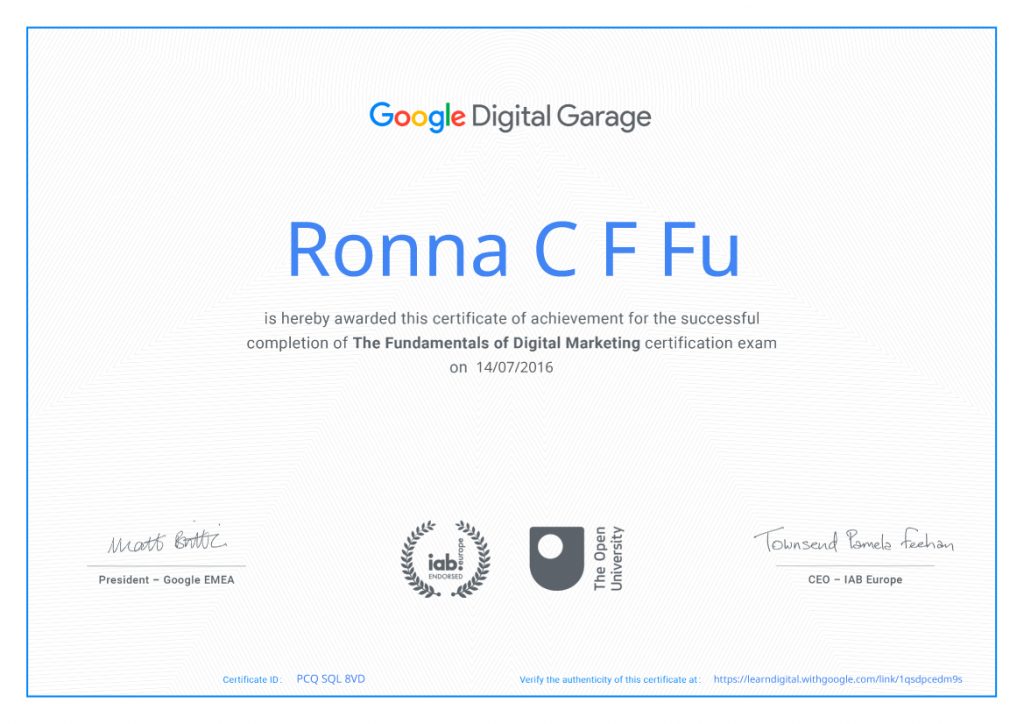
Keep in mind that your brand’s logo represents its identity and core principles. Working with a qualified graphic designer who can use their design expertise to realise your vision is an ideal choice. Additionally, they can make sure the logo is developed in high-resolution formats appropriate for a range of applications, including your website, social media accounts, business cards, and marketing materials.
Do you lack inspiration? Need assistance to create a unique logo for your business? I can make sure it is original, matches your sector, and communicates to your target market what your company stands for.
For a free consultation and price, please contact me through the contact page.
Research is the methodical investigation, study, and exploration of a particular subject or topic with the goal of gaining new information, understanding, and insights. It entails gathering, analysing, and interpreting data and information in order to respond to particular inquiries, explore theories, or address issues.
Scientific experiments, surveys, observational studies, literature reviews, and other types of research are just a few examples.
The main objectives of research are to advance understanding in a particular field and add to the body of existing knowledge. To guarantee that the results are trustworthy, legitimate, and reproducible, it frequently entails adhering to a structured and exacting procedure. Research can be done in a variety of fields, including the humanities, social sciences, and sciences.
Research plays an essential role for improving our knowledge of the world, stimulating innovation, and guiding judgement in a variety of domains. It is necessary for the creation of new theories, technologies, treatments, and policies as well as for tackling difficult problems and open-ended queries.
Key elements of research include:

A Media Buyer is a specialist who plans and executes marketing initiatives. The Buyer is in charge of creating, putting into action, and optimising strategies in addition to planning and overseeing campaigns.
What a Media Buyer should do before launching a campaign or marketing plan is something that I cannot emphasise enough. A media buyer should first look at the client’s network profile, any prior performance, and the sales data on the company or business. The Buyer should also conduct market, competitive, and situational research. By doing an internal analysis of behaviours and results as well as an external examination of the competition using the information at hand, the Buyer can go forward with a wise proposal for action.
With the knowledge of creating and understanding the audience and buyer personas, the Buyer can now develop a strategy based on the data gathered, as well as the media planning and budget.
The Media Buyer must be familiar with the functionality of each platform or tool where the campaigns will be launched. The Buyer picks the right objective for each platform, segment the right audience, and use the right creatives.
The Buyer must be responsible for analysing the measurements or KPIs to determine their status and whether or not they are effective. Based on this research, the Buyer must make changes to optimise the campaign and improve outcomes.
In short, a Media Buyer should do research as their first step, defining the audience or buyer persona, defining a strategy, creating and executing social media campaigns, and last but not least, analysing, monitoring, and optimising campaigns.

AUDIENCE: The target market for a digital marketing campaign or strategy is referred to as the audience. It is critical to recognise and comprehend the demographic traits, interests, behaviours, and demands of this audience to effectively adapt messages and marketing methods.
TARGET: The target is the particular audience segment that a marketing effort seeks to engage. It is the most accurate and thorough depiction of the target audience’s psychographic and demographic traits. To develop pertinent messages and content that resonate with a given set of individuals, a suitable target must be defined.
KEY PERFORMANCE INDICATORS: Key performance indicators, or KPIs, are used to assess the efficacy of social media marketing campaigns and strategies. These metrics may include reach, engagement, follower count, website traffic, and conversions, among others. KPIs make it possible to assess the efficacy and impact of marketing initiatives and to make defensible choices that will maximise outcomes.
OBJECTIVES: The particular goal of a social media campaign or plan is referred to as the objective in digital marketing. Among other things, objectives may include stimulating audience participation, generating leads, raising revenue, and enhancing brand exposure. To direct operations and assess a strategy’s effectiveness, it is crucial to set clear, measurable objectives.
BUDGET: The budget is the amount of money set aside for the execution of a social media marketing campaign. Expenses for content generation, ad promotion, graphic asset development, and employing external services, among other things, may be included in the budget. It is critical to allocate and manage the budget efficiently in order to meet defined goals and maximise return on investment.
British biologist and statistician Ronald Fisher first proposed the mathematical concept that served as the foundation for A/B testing in the 1920s. He demonstrated how to compare two experiences side by side in a methodical manner. His work ended up being highly successful in the scientific community. The concept of A/B testing would begin to be applied in clinical trials a few years later.
It wasn’t until the 1960s that this concept was implemented in the realm of marketing. A/B testing, as we know it now, first became popular in the 1990s.
When used on a web page, A/B testing permits testing of an infinite number of versions of the aforementioned web page, allowing for the accurate measurement of each version’s performance based on indicators like user actions or their website behaviour.
Technological advancements have also resulted in the introduction of A/B testing solutions that do not necessitate substantial statistical or programming skills to utilise, typically via relatively simple and straightforward applications.
A/B testing can improve any website because they all have a measurable goal. Every website is built with one objective in mind, ie, to increase conversion rates, whether it is an e-commerce site or a newspaper.
Lead Generation: Sites designed for the sale of services or the search for potential consumers are known as lead generating sites. A lead can also be the collection of an email that will be utilised for marketing purposes in the future.
E-commerce: E-commerce websites are among the website types that use A/B testing the most. These websites employ testing to guarantee that visitors always receive the best possible service from the website. The home page, product pages, product descriptions, or even buttons and their associated messaging are some of the parts that are most frequently optimised.
News: The main emphasis in this category is editorial testing. On websites with a lot of content, tests are typically based on determining whether a specific sort of content is successful or whether the content should be tailored for each type of user. However, in addition to the material itself, there are frequently a number of other components that might be examined.
In general, there are three types of websites: Lead generation. E-commerce and news. Depending on the business needs and aim, a range of different test methods may be used:

The Fundamentals of Digital Marketing Certification. A forty hours and twenty-six modules course by Google.
The Online Opportunity
Your First Steps in Online Success
Build Your Web Presence
Plan YOur Online Business Strategy
Make it Easy for People to Find A Business on the Web ( 5 topics)
1. Get Started with Search
2. Get Discovered with Search
3. Make Search Work for You
4. Be Noticed with Search Ad
5. Improve Your Search Campaign
Reach More People Locally, On Social Media or on Mobile (7 topics)
1. Get Noticed Locally
2. Help People Nearby Find You Online
3. Get Noticed With Social Media
4. Deep Dive Into Social Media
5. Discover the Possibilities of Mobile
6. Make Mobile Work for You
7. Get Started with Content Marketing
Reach more customers with advertising ( 4 topics)
1. Connect Through Emails
2. Advertise on Other Websites
3. Deep Dive Into Display Advertising
4. Make the Most of Videos
Track and measure web traffic (3 topics)
1. Get Started with Analytics
2. Find Success with Analytics
3. Turn Into Insights
Sell products or services online (2 topics)
1. Buld Your Online Shop
2. Sell More Online
Take a business global (1 topic)
1. Expand Internationally
I completed a course in creating presentations, documents, data visualizations, videos and other branded contents using Visme. Visme is a powerful online tool that allows users to create, edit, share, and store visual content. It may be uses as a presentation programme to create slide decks, but you can also design templates for visuals for letterheads, infographics, charts, logos, and storyboards.

How secure is your contactless bank card?
Have you ever wondered that if someone could get close enough to you and your contactless bank cards, they could somehow capture the data and use it in fraud? Well, the simple answer is they can’t. (According to global business Thales Group)
The link below, details some myths and facts that will explain why your contactless card/s are safe from being skimmed, whether they are in some form of protective wallet or not.
Read here for more information.
National Trading Standards (NTS) are warning the public that criminals are using fake online reviews to sell poor quality goods and services.
It has become a common practice for a lot of people to seek reviews prior to making a purchase, but how do we know whether the reviews we read are genuine?
The following guidance is from NTS:
• Timing and spacing – check for multiple similar reviews that have been uploaded within a few minutes or hours.
• Check the reviewer’s activity – if an account has been activated recently or has only reviewed a narrow range of products/services, it could indicate suspicious activity.
• Vague language – legitimate reviews will often be personal and specific to the individual’s experience. A fake is more likely to be vague, using generic words and phrases such as ‘amazing’, ‘awesome’ and ‘buy this product’.
• Check contact details – if a reviewer is happy to be contacted with questions, and is responsive, it’s a good sign they’re legitimate.
• Use a browser plug-in – they use artificial intelligence to analyse reviews, identify suspicious activity and suggest better alternatives. Examples are Fakespot and ReviewMeta.
• Look beyond the star rating – whilst a star rating of 4.5 or 5 can be a good quality indicator, be sure to look at the reviews too.
For further information and advice visit Online shoppers buy 80 million ‘disappointing’ items based on rave reviews – National Trading Standards
For those of you that use Amazon.co.uk you may already have been informed that as of January 19th 2022, Amazon will not accept Visa credit cards for payment.
I note with interest, that they advise you to replace the card with either a Debit Card or another credit card issuer.
Please remember, that using a credit card to online shop provides you with more consumer protection than using your debit card.
Using a credit card, you are spending someone else’s money until you pay it back.
Using a debit card, you are spending your own money.
I like to try and predict how the criminals will react to the Amazon announcement, so I would not be surprised and I urge you to be alert to the fact, that criminals will exploit this situation to send phishing communications that appear to come from Amazon, inviting you to click on a link so you can change the card details on your account.
May I suggest, that you access your Amazon account (or any online account) via the genuine website or genuine app, not via a link in a text, email or social media message.
Mr Nigel Sutton 8517
Fraud and Cyber Security Advisor
Serious & Organised Crime (Intelligence and Specialist Crime Department)
Ext: 01480 422773
Cambridgeshire Constabulary
Hinchingbrooke Park,
Huntingdon, PE29 6NP
Hosted by XtraByte-UK | Privacy Policy | Terms & Conditions | Contact | News